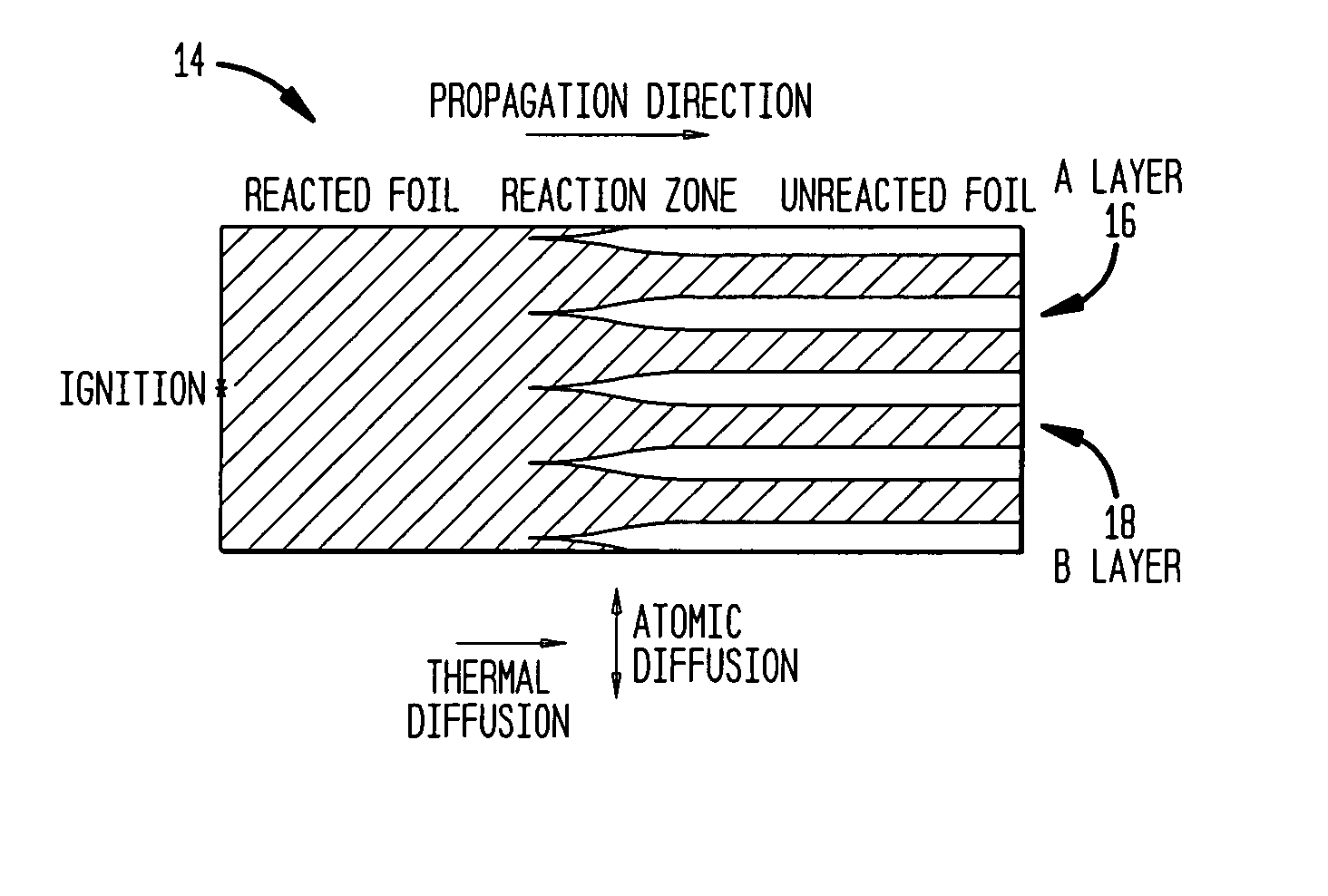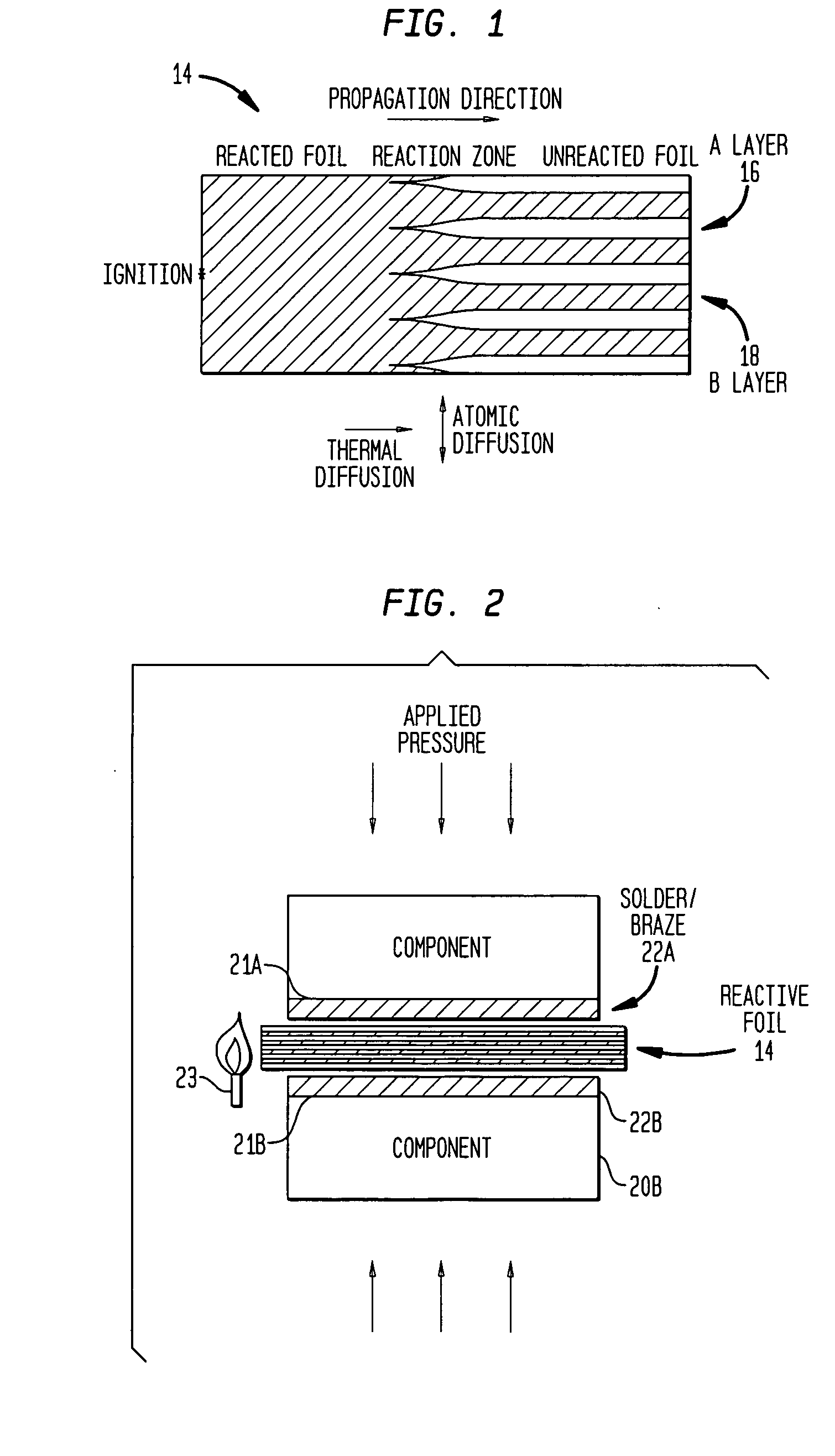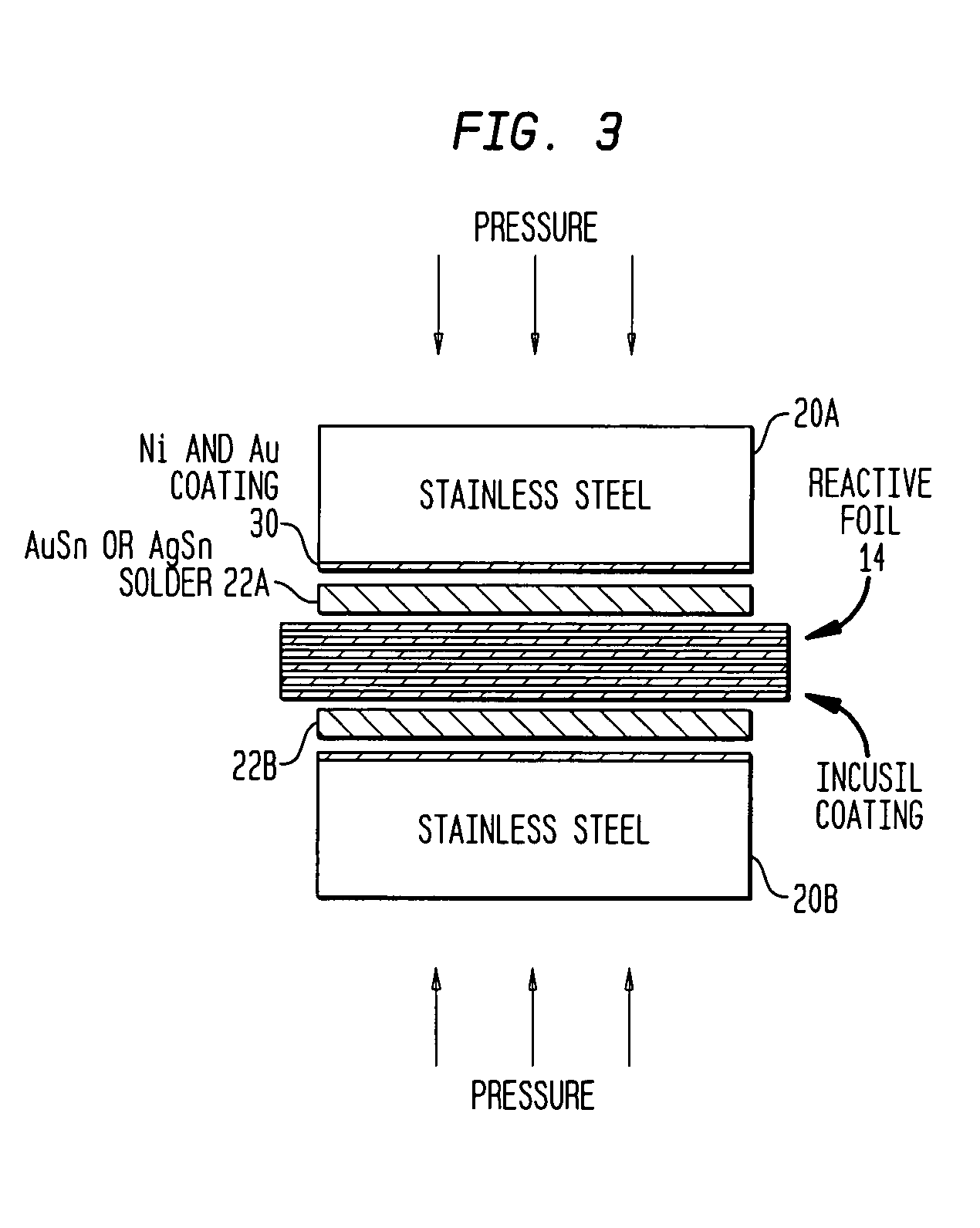Method of joining using reactive multilayer foils with enhanced control of molten joining materials
a multi-layer foil and enhanced control technology, applied in the direction of non-electric welding apparatus, process and machine control, explosions, etc., can solve the problems of reducing exposing both the components and the joint area to deleterious heat, and reducing the efficiency of annealing, etc., to achieve the effect of reducing equipment and processing costs, increasing the volume of melting material and/or the duration of melting
- Summary
- Abstract
- Description
- Claims
- Application Information
AI Technical Summary
Benefits of technology
Problems solved by technology
Method used
Image
Examples
Embodiment Construction
[0037] This description is divided into two parts. Part I describes and illustrates reactive foil joining, and Part II describes control of molten joining material in the joining process. References indicated by bracketed numbers are fully cited in an attached list.
I. Joining of Bodies Using Reactive Multilayer Foil
[0038] Self-propagating exothermic formation reactions have been observed in a variety of nanostructured multilayer foils, such as Al / Ni, Al / Ti, Ni / Si and Nb / Si foils [1-4] These reactions are driven by a reduction in atomic bond energy. Once the reactions are initiated by a pulse of energy, such as a small spark or a flame, atomic diffusion occurs normal to the layering.
[0039]FIG. 1 schematically illustrates a multilayer reactive foil 14 made up of alternating layers 16 and 18 of materials A and B, respectively. These alternating layers 16 and 18 may be any materials amenable to mixing of neighboring atoms (or having changes in chemical bonding) in response to a stim...
PUM
| Property | Measurement | Unit |
|---|---|---|
| pressure | aaaaa | aaaaa |
| pressure | aaaaa | aaaaa |
| thickness | aaaaa | aaaaa |
Abstract
Description
Claims
Application Information
 Login to View More
Login to View More - R&D
- Intellectual Property
- Life Sciences
- Materials
- Tech Scout
- Unparalleled Data Quality
- Higher Quality Content
- 60% Fewer Hallucinations
Browse by: Latest US Patents, China's latest patents, Technical Efficacy Thesaurus, Application Domain, Technology Topic, Popular Technical Reports.
© 2025 PatSnap. All rights reserved.Legal|Privacy policy|Modern Slavery Act Transparency Statement|Sitemap|About US| Contact US: help@patsnap.com



